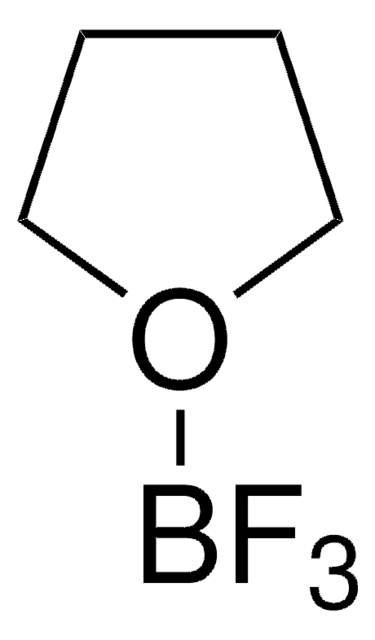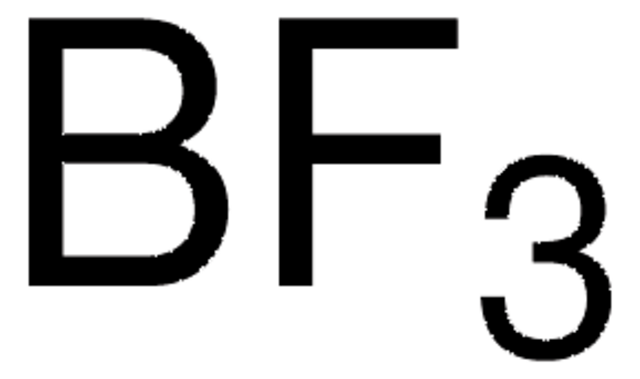359963
Boron trifluoride dihydrate
96%
Synonym(s):
Boron fluoride dihydrate, Trifluoroborane dihydrate
About This Item
Recommended Products
Quality Level
Assay
96%
form
liquid
reaction suitability
core: boron
reagent type: Lewis acid
reagent type: catalyst
refractive index
n20/D 1.316 (lit.)
density
1.636 g/mL at 25 °C (lit.)
SMILES string
[H]O[H].[H]O[H].FB(F)F
InChI
1S/BF3.2H2O/c2-1(3)4;;/h;2*1H2
InChI key
MJCYPBSRKLJZTB-UHFFFAOYSA-N
Looking for similar products? Visit Product Comparison Guide
Related Categories
Application
- An activator in Pechmann condensation to synthesize 4-methylcoumarin derivatives by the reaction between substituted phenols and methyl acetoacetate.
- An initiator for the polymerization of benzoxazine.
- A catalyst in the regioselective Fries rearrangement of phenolic esters to give hydroxyphenyl alkyl/aryl ketones.
- A catalyst to prepare 8-hydroxymethyltricyclene acetate by the reaction between camphene and formaldehyde in the presence of methylene chloride-acetic anhydride solvent.
Signal Word
Danger
Hazard Statements
Precautionary Statements
Hazard Classifications
Acute Tox. 2 Inhalation - Acute Tox. 4 Oral - Eye Dam. 1 - Skin Corr. 1A - STOT RE 2 Inhalation - STOT SE 3
Target Organs
Kidney, Respiratory system
Storage Class Code
6.1A - Combustible acute toxic Cat. 1 and 2 / very toxic hazardous materials
WGK
WGK 3
Flash Point(F)
Not applicable
Flash Point(C)
Not applicable
Personal Protective Equipment
Choose from one of the most recent versions:
Already Own This Product?
Find documentation for the products that you have recently purchased in the Document Library.
Customers Also Viewed
Global Trade Item Number
| SKU | GTIN |
|---|---|
| 359963-100ML | 4061831813791 |
| 359963-500ML | 4061831813807 |
Our team of scientists has experience in all areas of research including Life Science, Material Science, Chemical Synthesis, Chromatography, Analytical and many others.
Contact Technical Service








